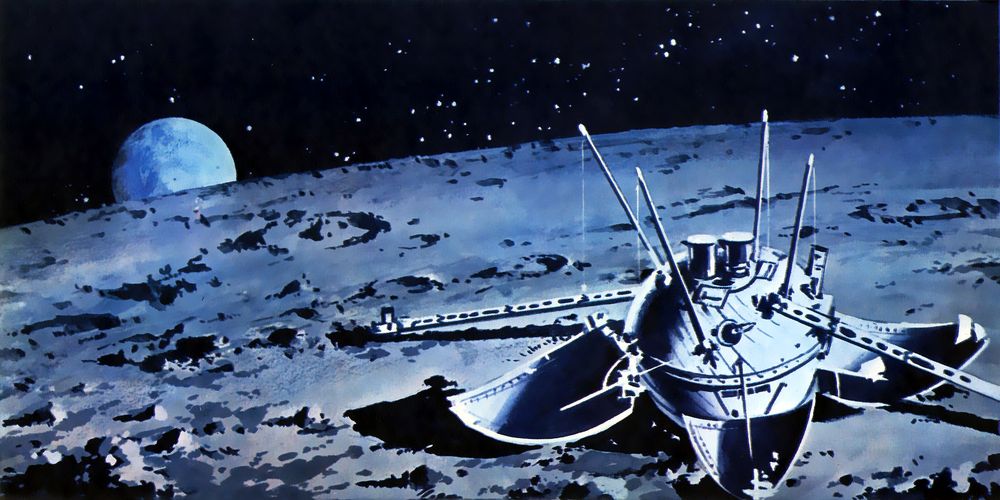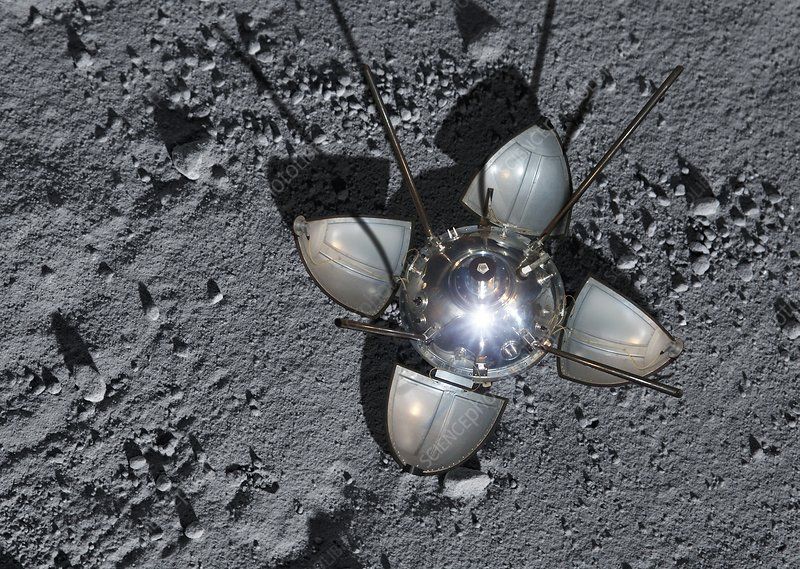The first spacecraft to achieve a survivable soft-landing on the moon was the Soviet unmanned spacecraft Luna 9.
It was an exceedingly difficult milestone to reach, because making a soft landing required incredible precision.
Luna 9 was also the first spacecraft to transmit photographic data from the Moon’s surface to Earth.

Luna 9 on the lunar surface.
Artwork byDan Beaumont/Flickr
Luna 9 was the Soviet Unions twelfth attempt to land on the moon.
All the preceding eleven missions failed.

Some failed to launch, two flew past the moon, and three made crash landings.
Luna 9 comprised of two parts and had a total mass of 1538 kg.
The part that landed was a spherical body about 2 feet in diameter and a mass of 99 kg.

Four antennas that automatically opened after landing were mounted on the outside of the compartment.
An airbag amortization system to cushion the landing was also mounted outside the station.
The scientific equipment comprised a lightweight (1.5 kg) panoramic television camera and a radiation detector.

After the failure of the first 11 Luna missions, the project was transferred to Lavochkin design bureau.
Luna 9 was the first Lavochkin design.
A model of the Luna 9 lander.
Photo: Science Photo
The spacecraft launched successfully on January 31, 1966.
It took 6 days before the spacecraft finally reached moon.
Preparation for landing was carried out at an altitude of 8,300 km.
Retro-rockets were fired to bring the spacecraft in the correct orientation.
At 75 km altitude, the side modules were jettisoned and the air bags were inflated.
The impact time was recorded as 18:45:30 UT on February 3, 1966.
Landing scenario of the Luna-9 mission.
The petals pushed outwards and downwards to function like legs and helped stabilize the spacecraft on the lunar surface.
A television camera and antennas popped open and began photographing the lunar surface.
These first images were very poor quality because the sun was low.
The photographs were transmitted via seven radio sessions totaling 8 hours and 5 minutes.
When assembled, the photographs provided four panoramic views of the nearby lunar surface.
The first photo ever taken from the surface of the Moon.
The first panoramic images arrived very early in the morning in Moscow.
This delayed permission required from Dmitriy Ustinov to publish the photographs in the Soviet media.
The spacecraft operated for 3 days before its batteries ran out and the mission ended.